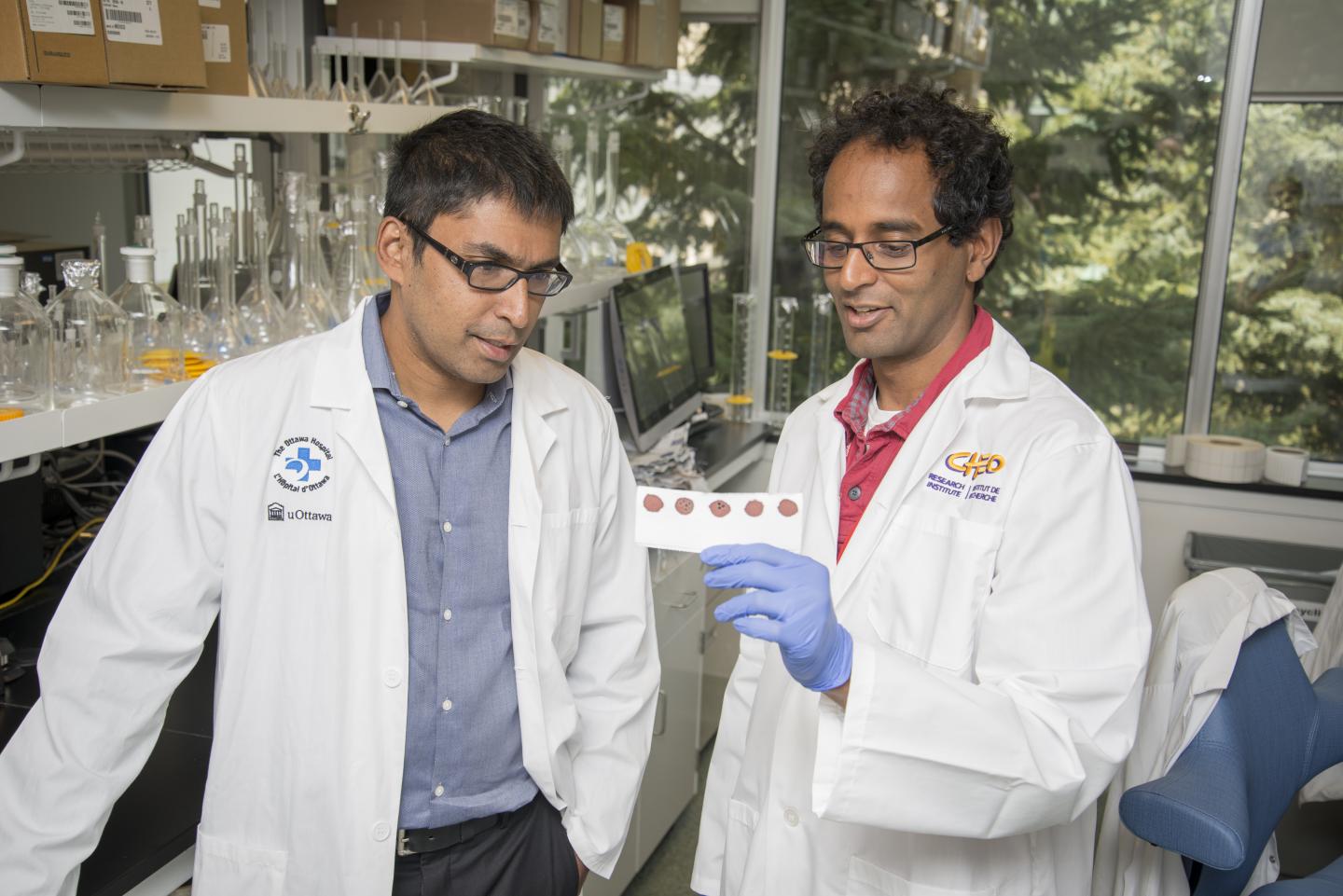Study funded by Bill & Melinda Gates Foundation shows blood test and mathematical model can accurately identify preterm babies without ultrasound

Credit: CHEO
Preterm birth is a leading cause of death among children under the age of five, with low resource countries facing the greatest challenge. But before solutions can be tested, researchers first need to be able to accurately measure the problem at a population level. This has been particularly difficult in countries where pregnant women don’t have routine access to ultrasound technology to determine gestational age.
New research published in eLife shows that a mathematical model developed in Canada could help. The model, developed with support from the Bill & Melinda Gates Foundation, relies on simple blood tests done soon after birth, as well as birth weight and sex.
“We’re using metabolic fingerprints – unique patterns in specific molecules found in the blood – to help estimate gestational age,” said senior author Dr. Kumanan Wilson, an internal medicine specialist and senior scientist at The Ottawa Hospital and professor at the University of Ottawa. “This could be crucial to global efforts to reduce preterm birth and improve newborn health.”
Dr. Wilson developed the model together with Dr. Steven Hawken, a scientist and big data expert at The Ottawa Hospital and assistant professor at the University of Ottawa. After validating the model using Canadian data, they teamed up with researchers from Bangladesh to try it in another setting.
The team enrolled more than 1,000 pregnant women in the study from Matlab, a research field station of the International Centre for Diarrhoeal Disease Research, Bangladesh. The women received regular ultrasounds as a gold standard reference for gestational age. Soon after birth, a few drops of newborn blood were collected from either a heel prick or the umbilical cord. The blood samples were sent to Newborn Screening Ontario in Ottawa, Canada for testing and the data was analyzed at The Ottawa Hospital.
With the heel prick blood samples, the mathematical model could accurately estimate gestational age to within two weeks of the ultrasound-validated age 94 percent of the time. Using the cord blood samples, the model was accurate to within two weeks 90 percent of the time.
The team is now partnering with Stanford University to implement their test in several other countries. They are also exploring the use of artificial intelligence to make it even better.
Quotes from collaborators
Dr. Anisur Rahman, Scientist, Maternal and Child Health Division, International Centre for Diarrhoeal Disease Research, Bangladesh
“The International Centre for Diarrhoeal Disease Research is pleased to have facilitated this important work in Bangladesh, which may have a meaningful impact on the health of newborns.”
Dr. Gary Darmstadt, Associate Dean for Maternal and Child Health, Professor, Department of Pediatrics, Stanford University School of Medicine.
“We are excited to see these results and are currently making plans to implement this approach in several low-income settings.”
###
Authors and affiliations: Malia SQ Murphy (The Ottawa Hospital), Steven Hawken (The Ottawa Hospital, University of Ottawa), Wei Cheng (The Ottawa Hospital), Lindsay A Wilson (The Ottawa Hospital), Monica Lamoureux (Newborn Screening Ontario, Children’s Hospital of Eastern Ontario), Matthew Henderson (Newborn Screening Ontario, Children’s Hospital of Eastern Ontario), Jesmin Pervin (International Centre for Diarrhoeal Disease Research, Shaheed Tajuddin Ahmed Sarani, Mohakhali, Dhaka, Bangladesh), AK Azad Chowdhurye (Dhaka Shishu (Children) Hospital, Sher-e-Bangla Nagar, Dhaka, Bangladesh), Courtney Gravett (Global Alliance to Prevent Prematurity and Stillbirth, USA), Eve Lackritz (Global Alliance to Prevent Prematurity and Stillbirth, USA), Beth K Potter (University of Ottawa), Mark Walker (The Ottawa Hospital, University of Ottawa), Julian Little (University of Ottawa), Anisur Rahman (International Centre for Diarrhoeal Disease Research, Shaheed Tajuddin Ahmed Sarani, Mohakhali, Dhaka, Bangladesh), Pranesh Chakraborty (Newborn Screening Ontario, Children’s Hospital of Eastern Ontario), Kumanan Wilson (The Ottawa Hospital, University of Ottawa).
Funding: This study was funded by the Bill & Melinda Gates Foundation. Research at The Ottawa Hospital is possible because of generous donations to The Ottawa Hospital Foundation.
Media contact
Amelia Buchanan
Senior Communication Specialist
Ottawa Hospital Research Institute
Office: 613-798-5555 x 73687
Cell: 613-297-8315
[email protected]
Media Contact
Amelia Buchanan
[email protected]
Related Journal Article
http://dx.




